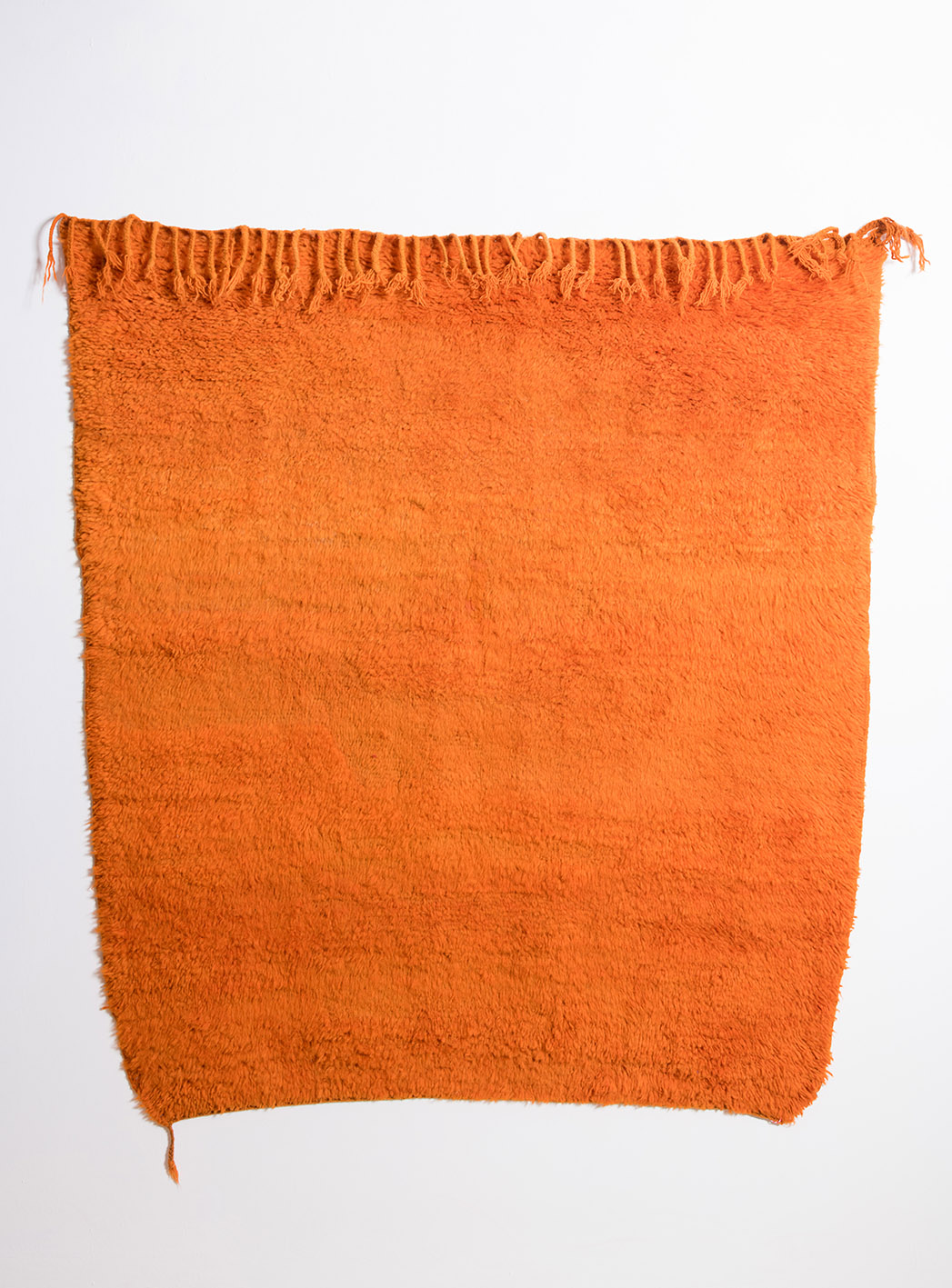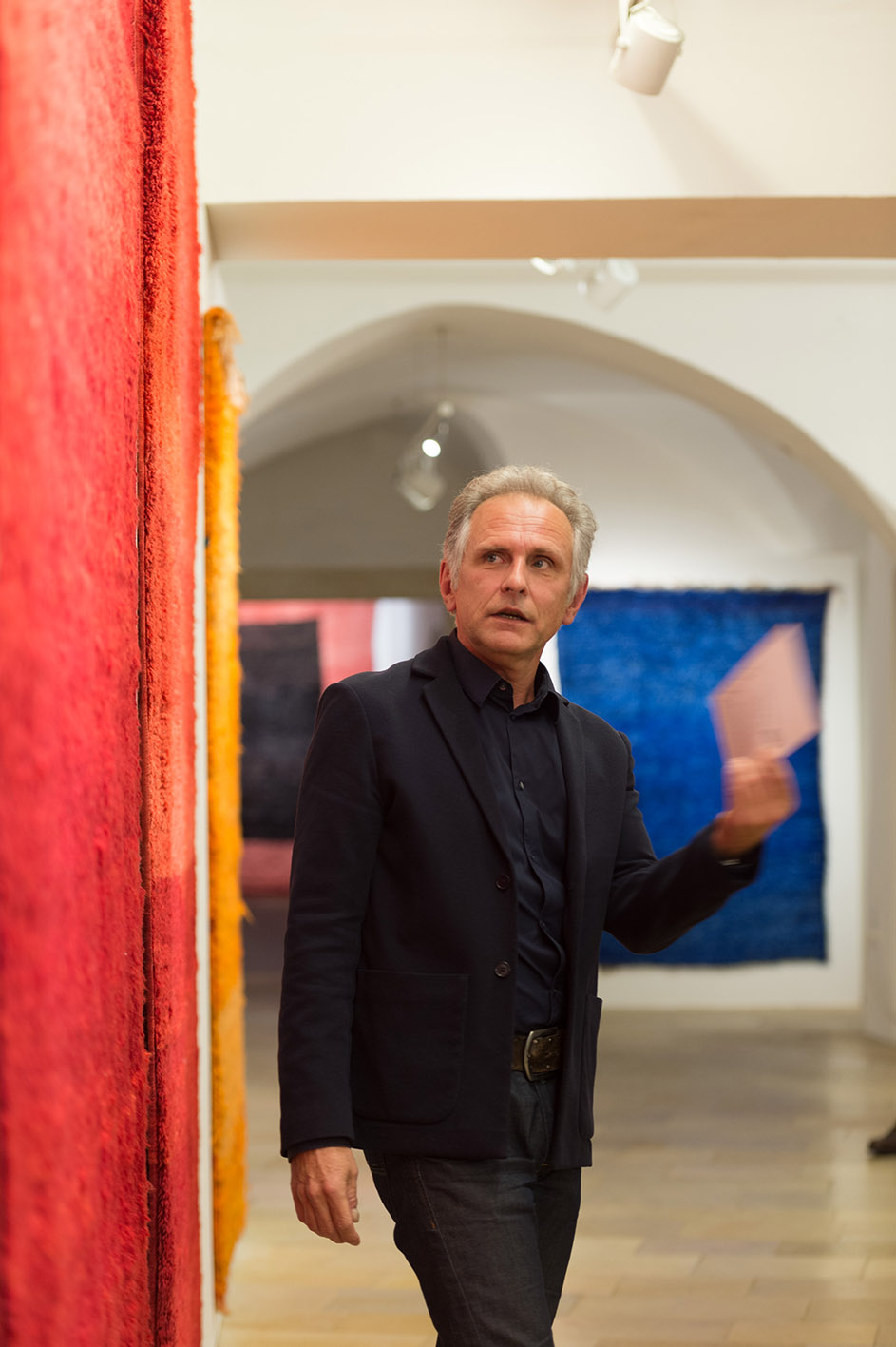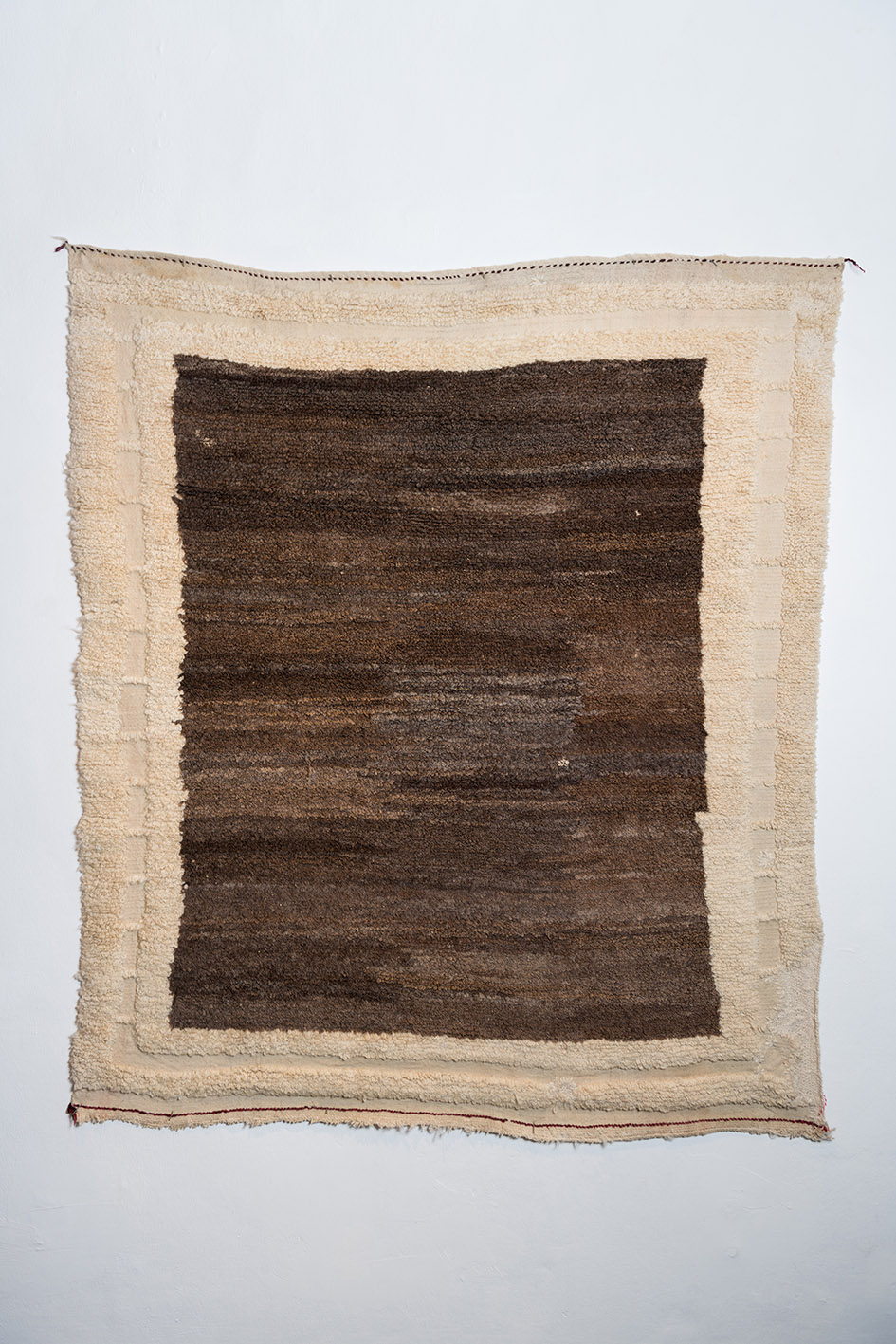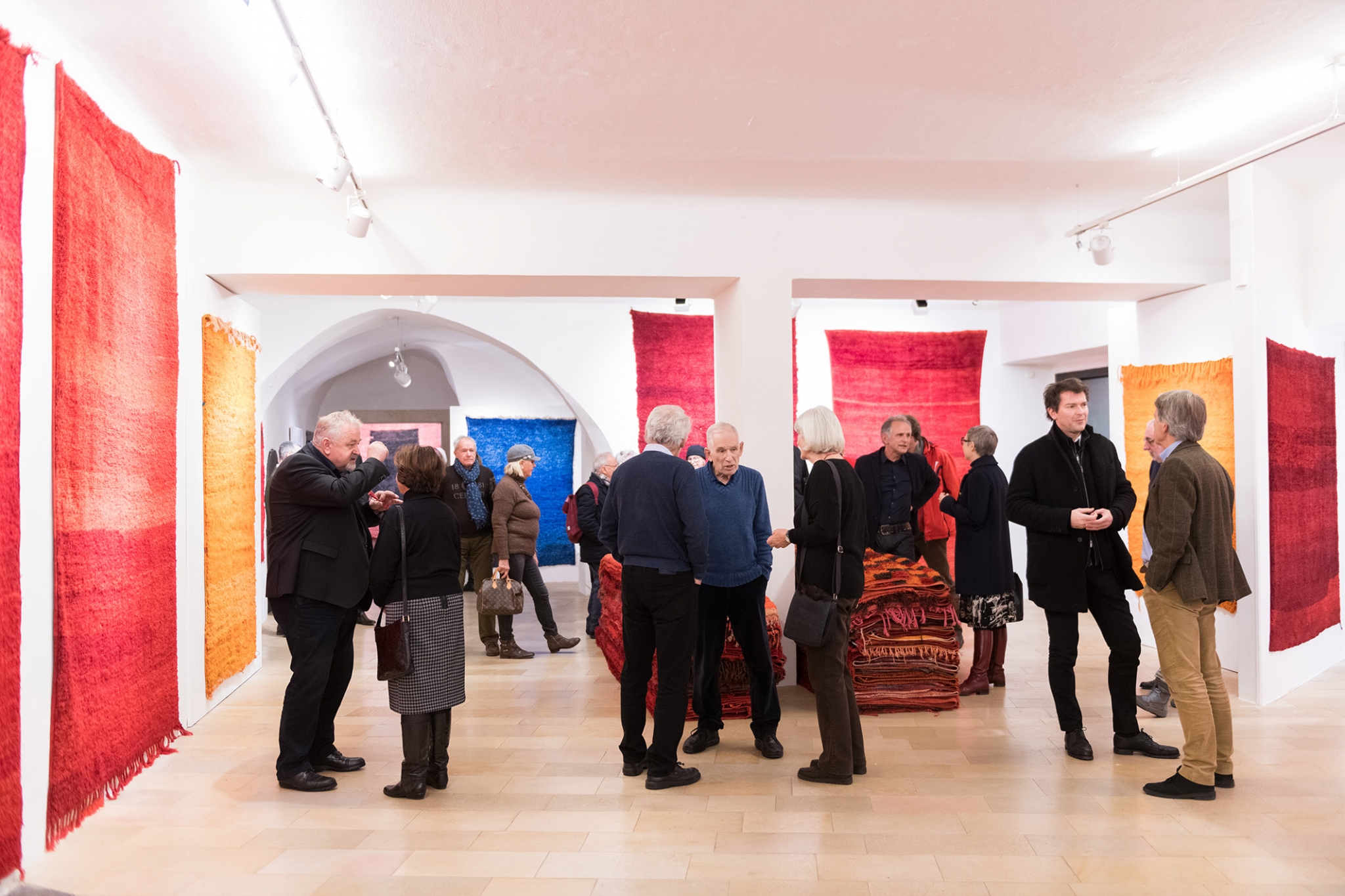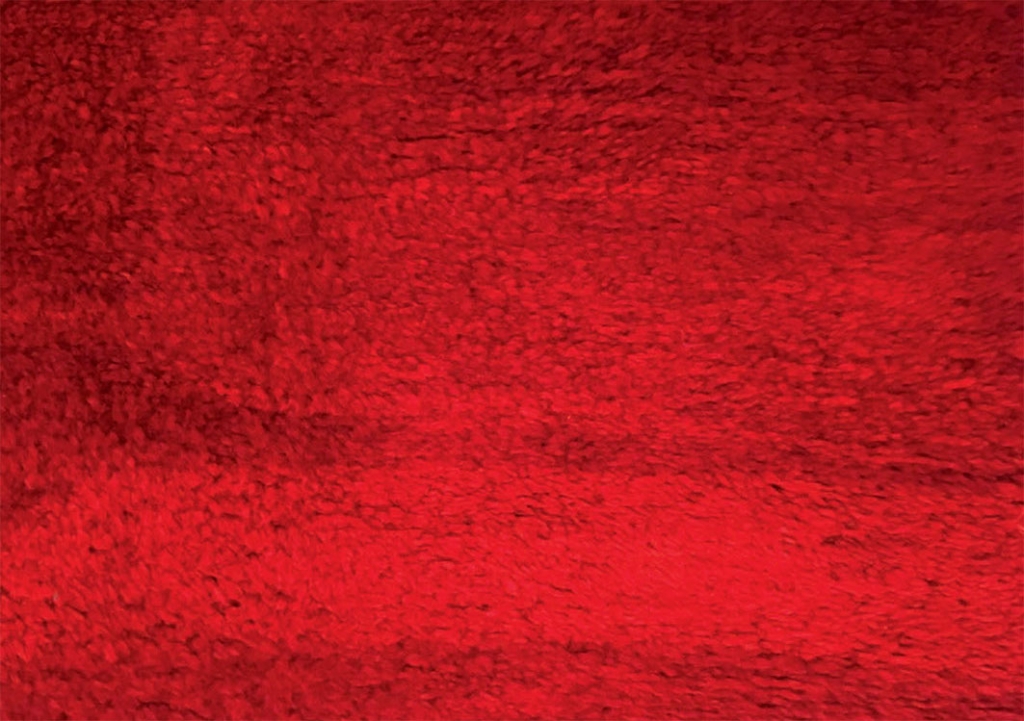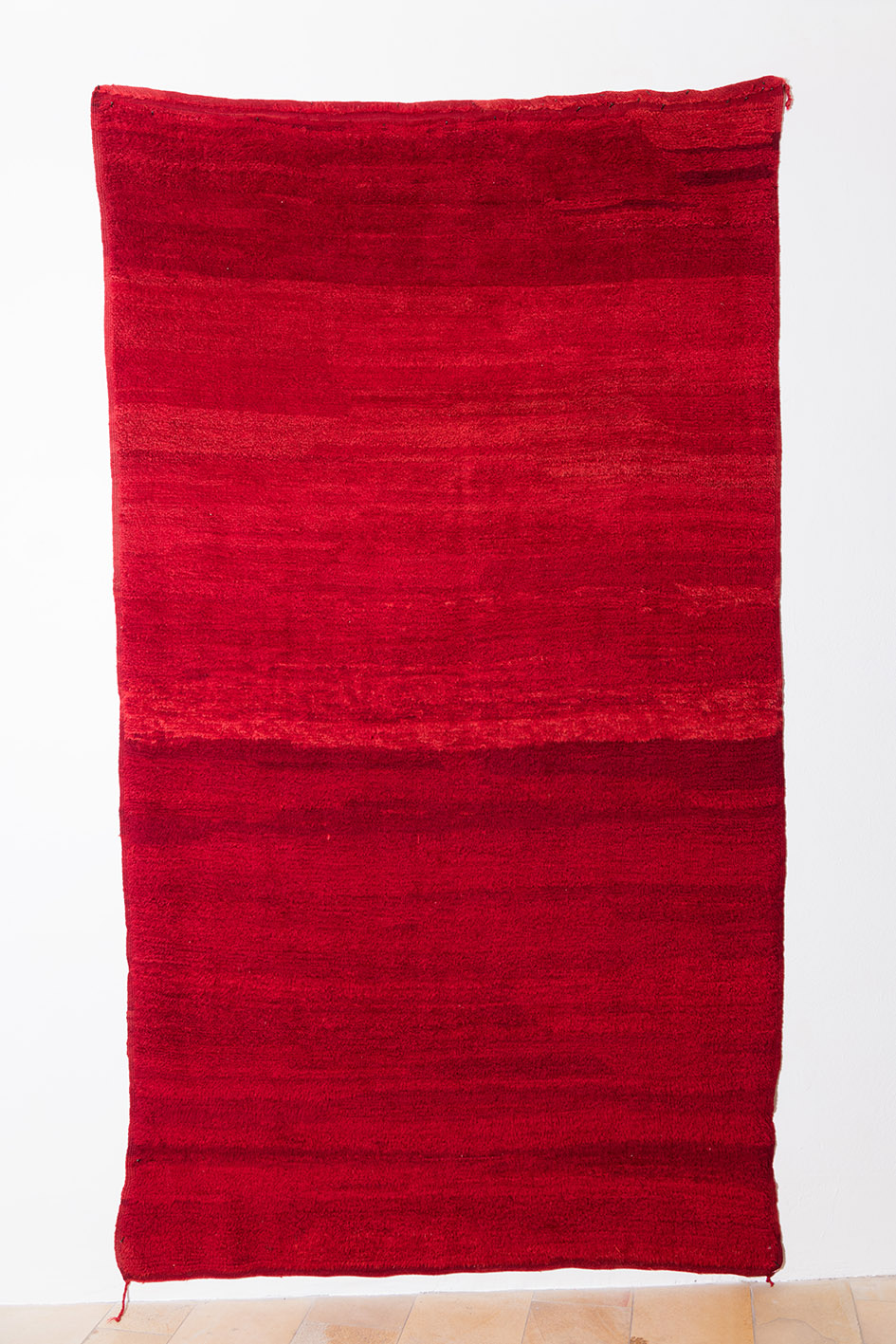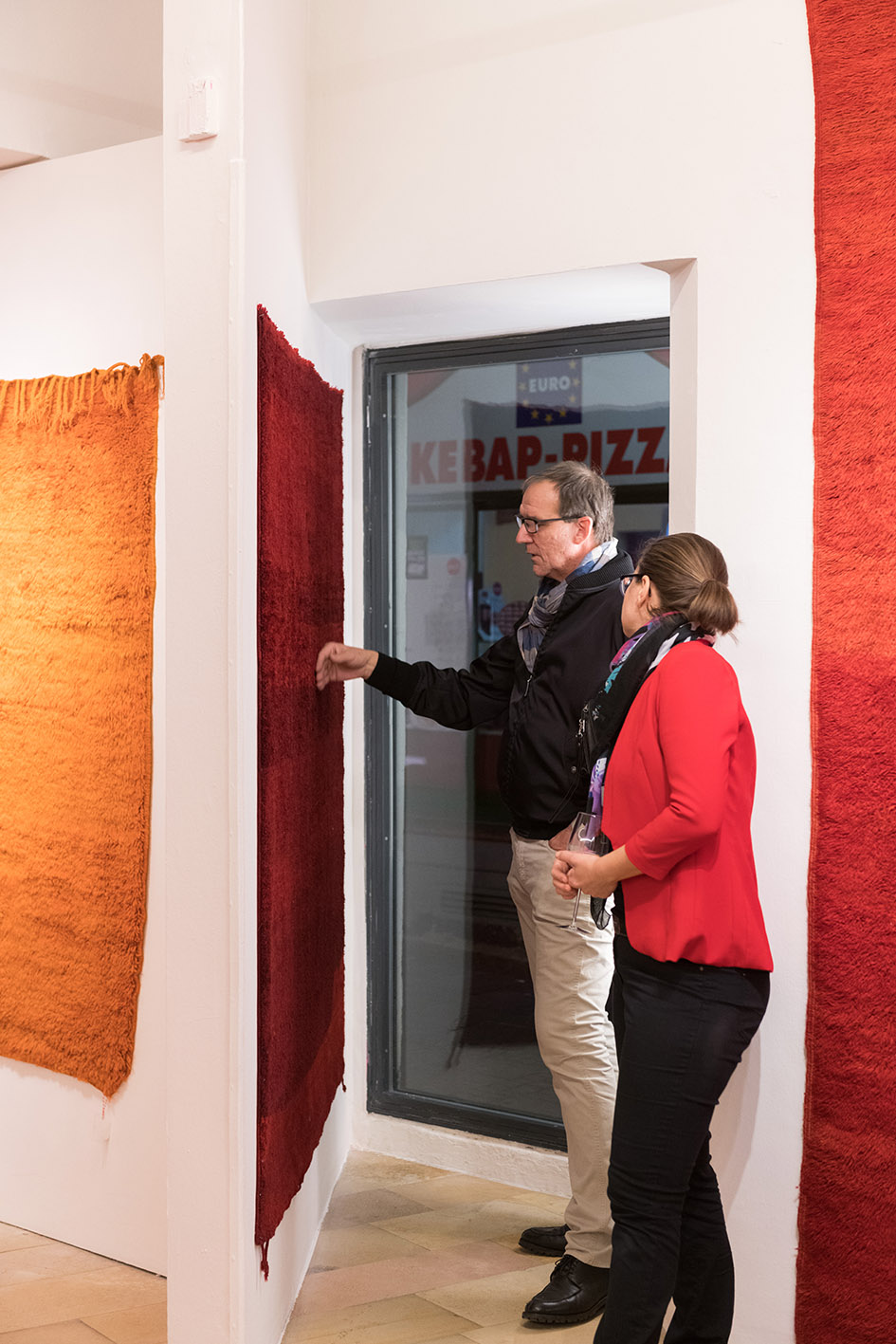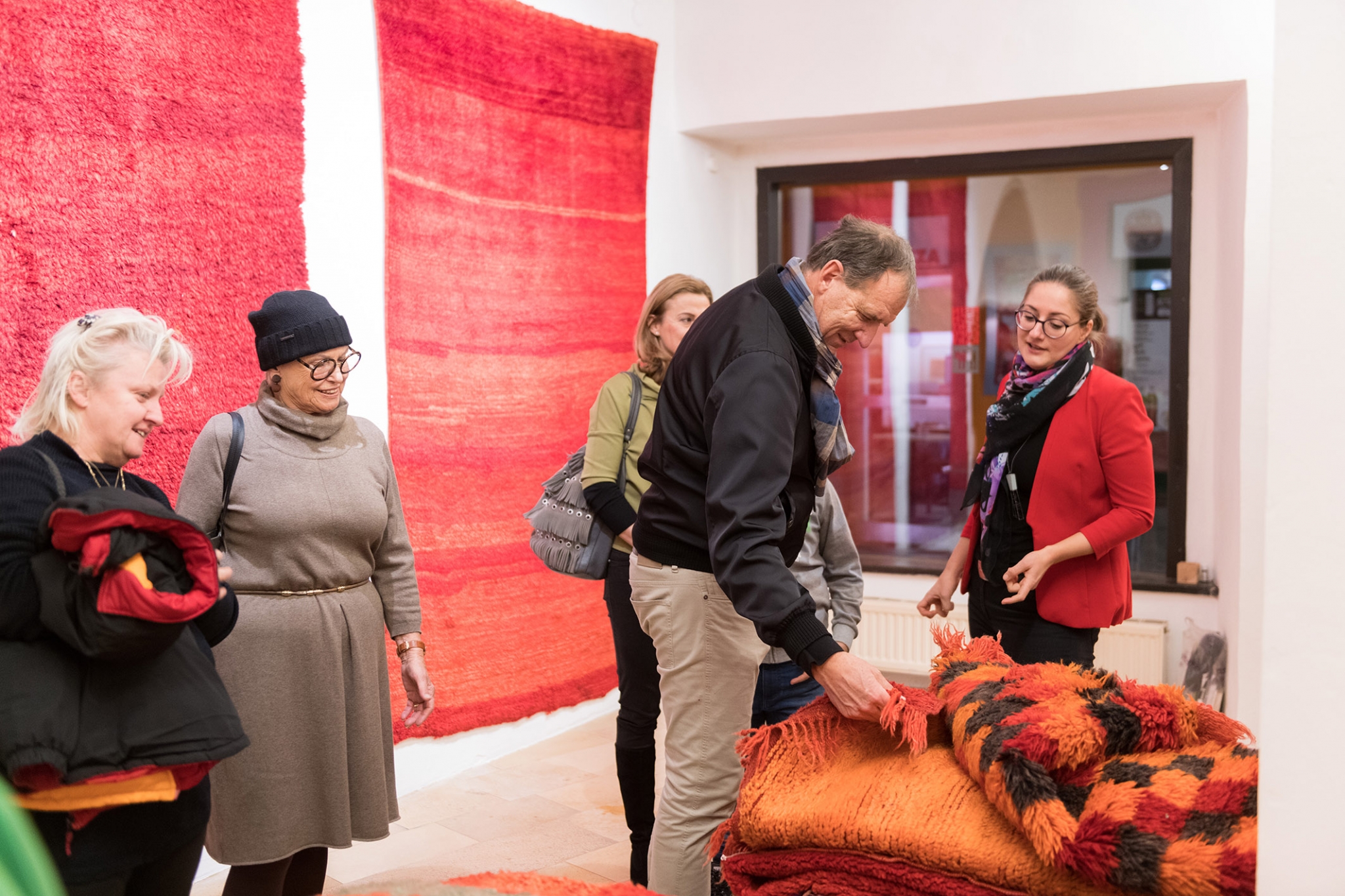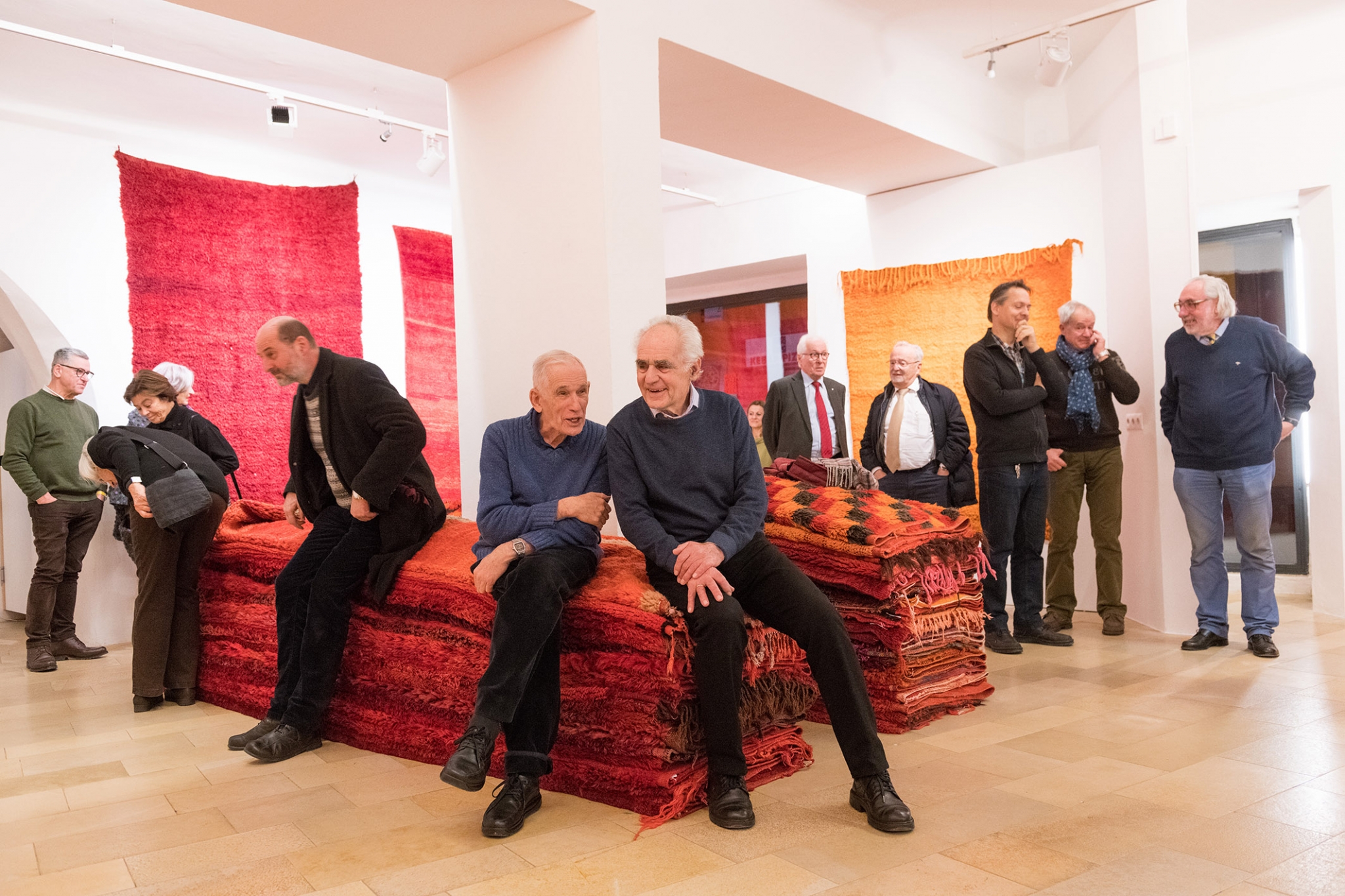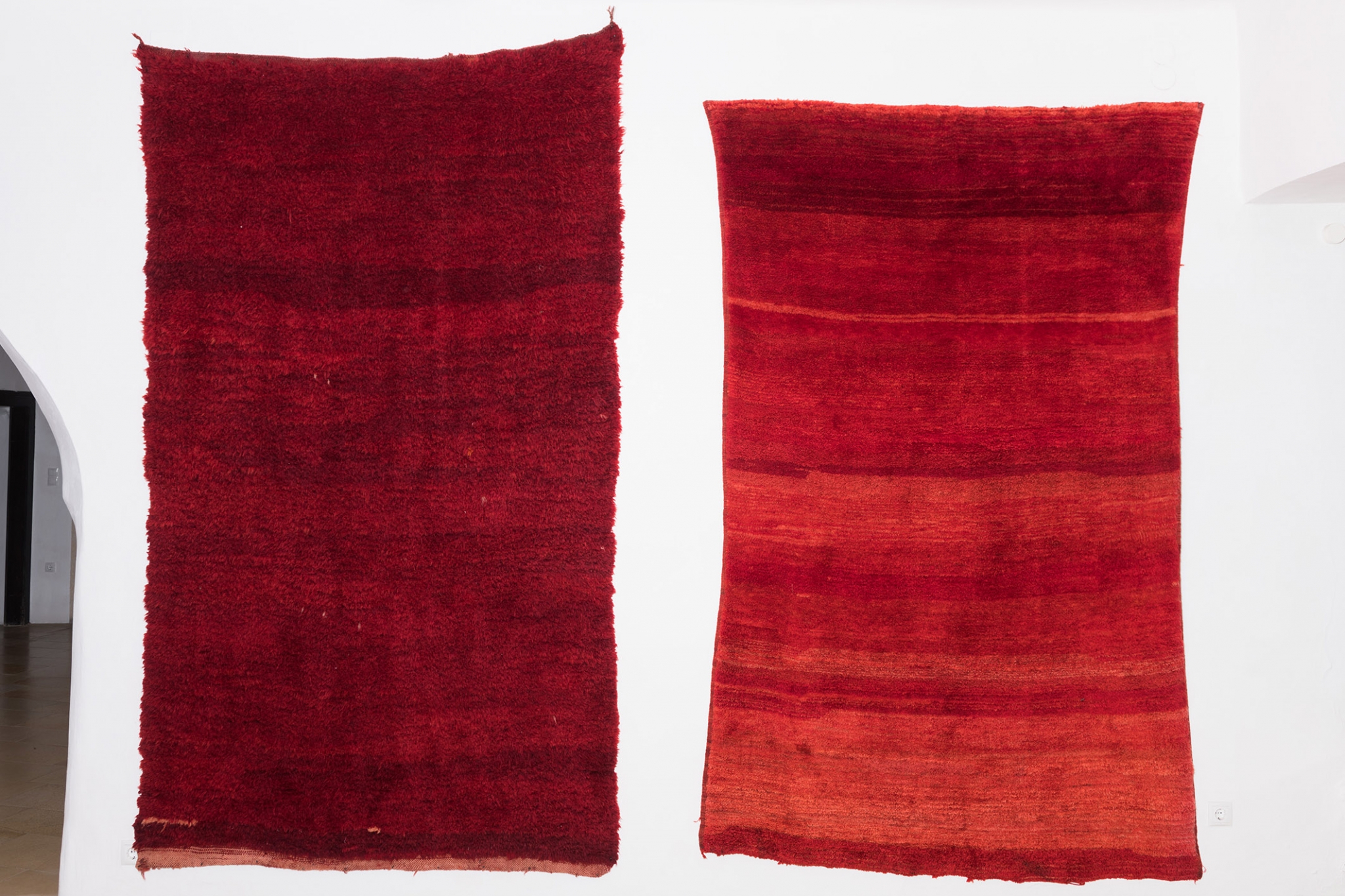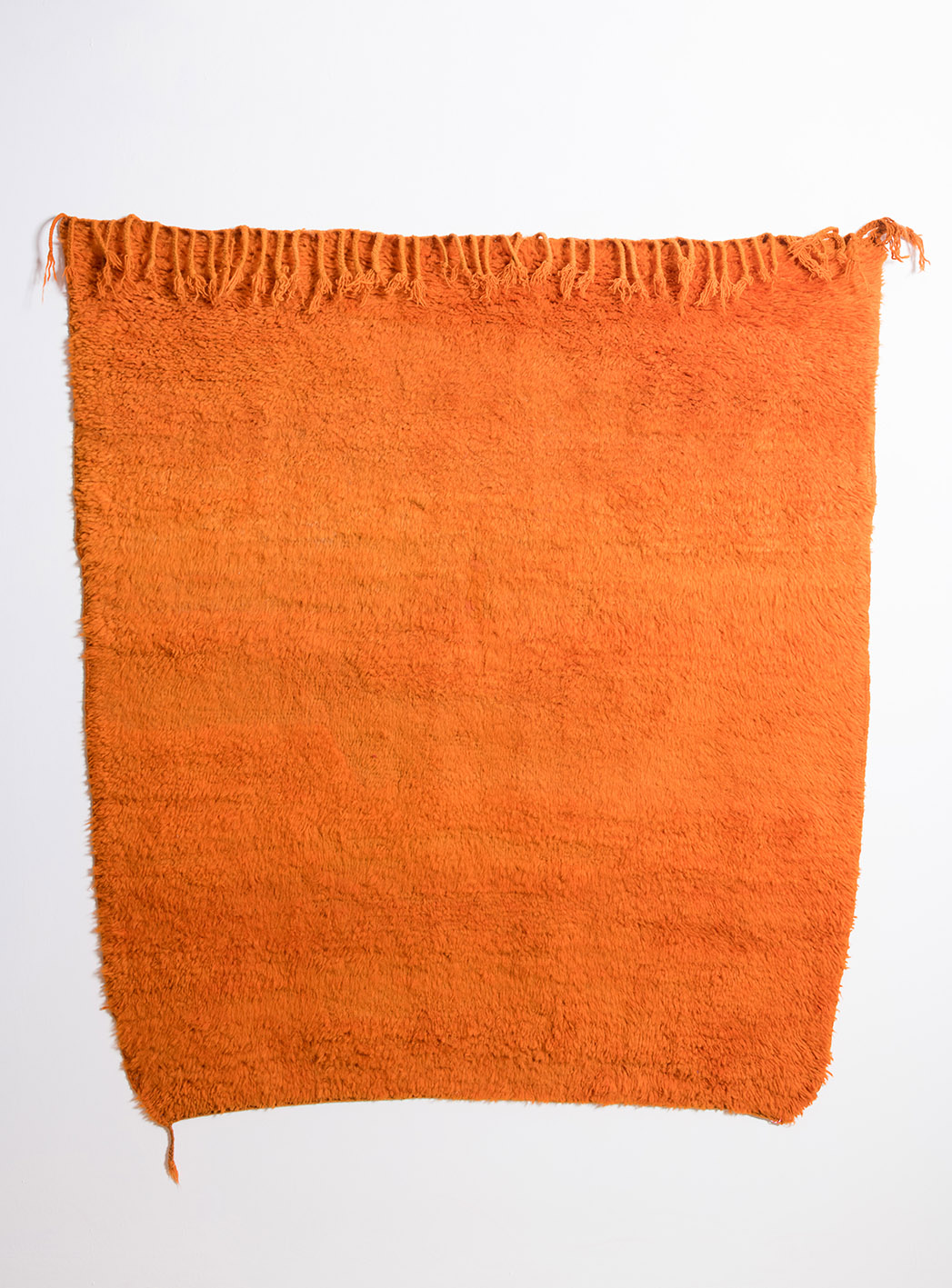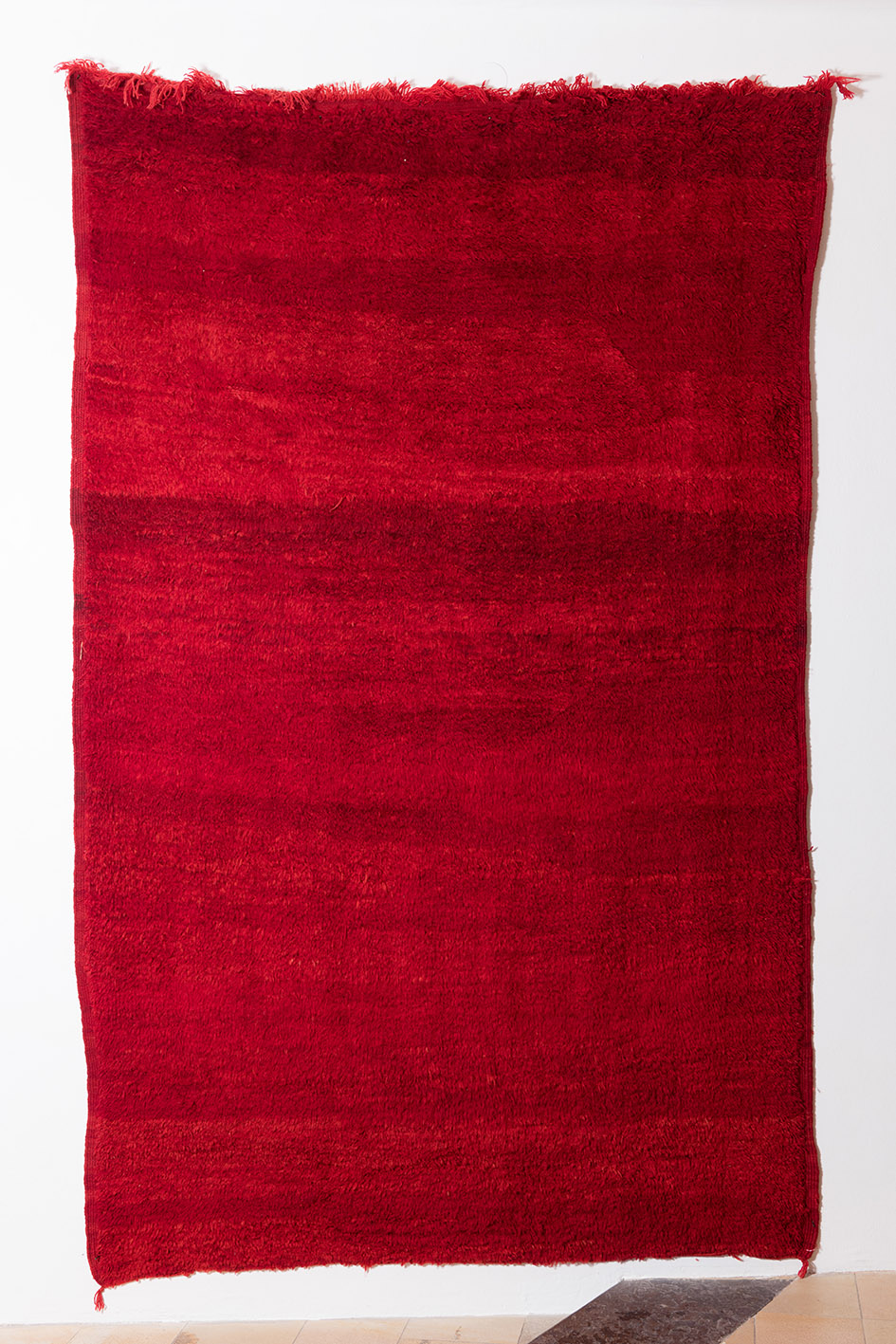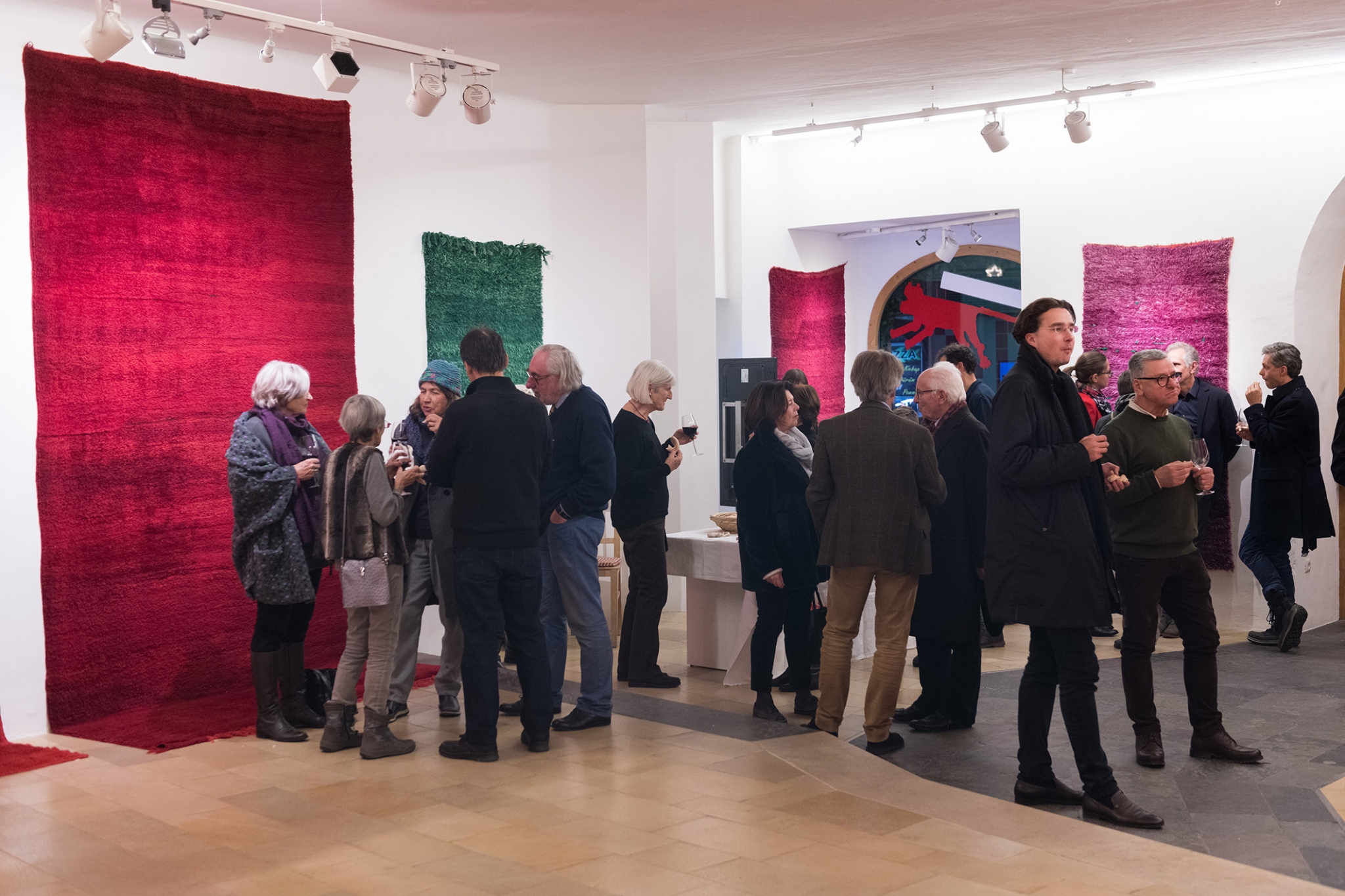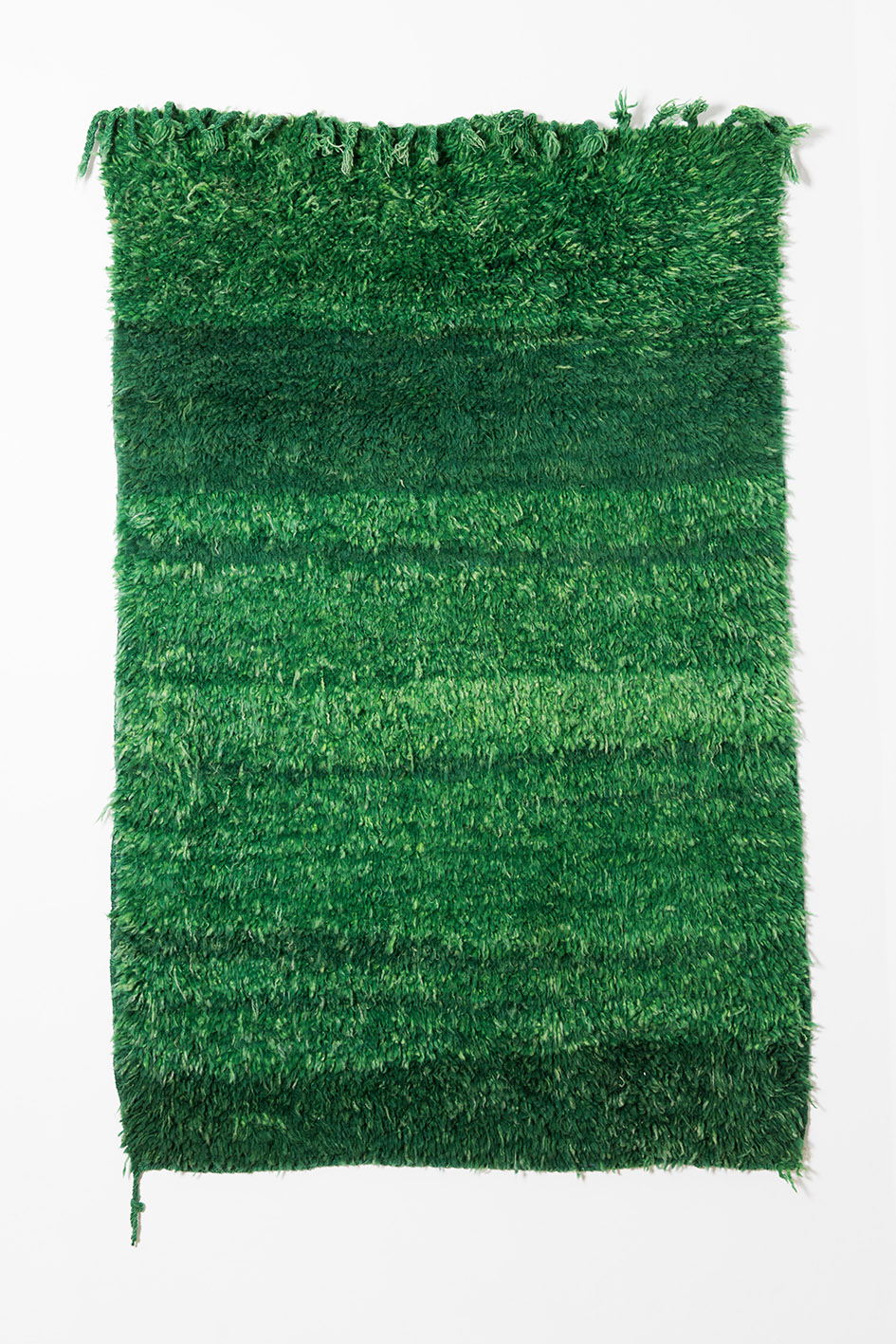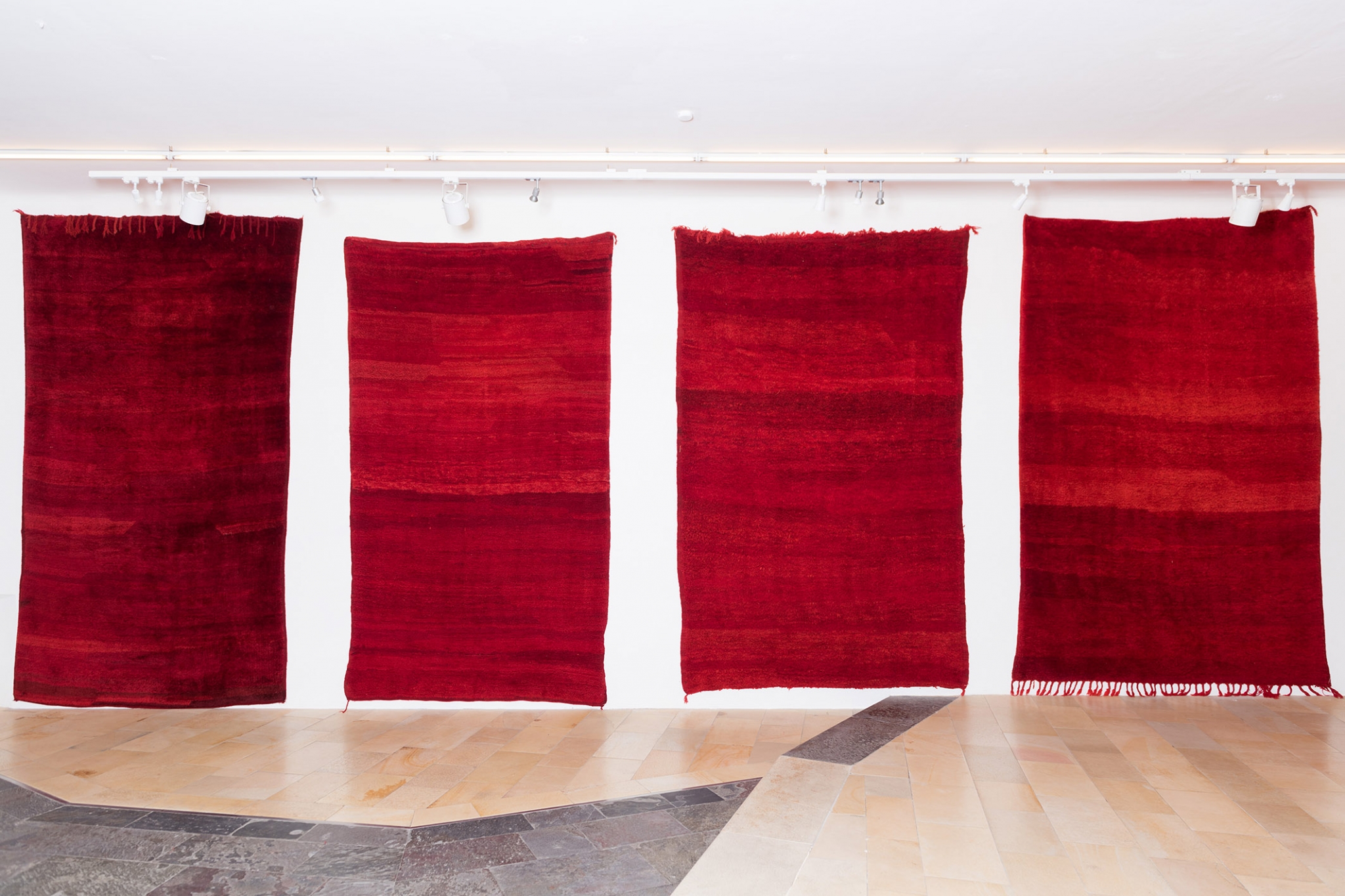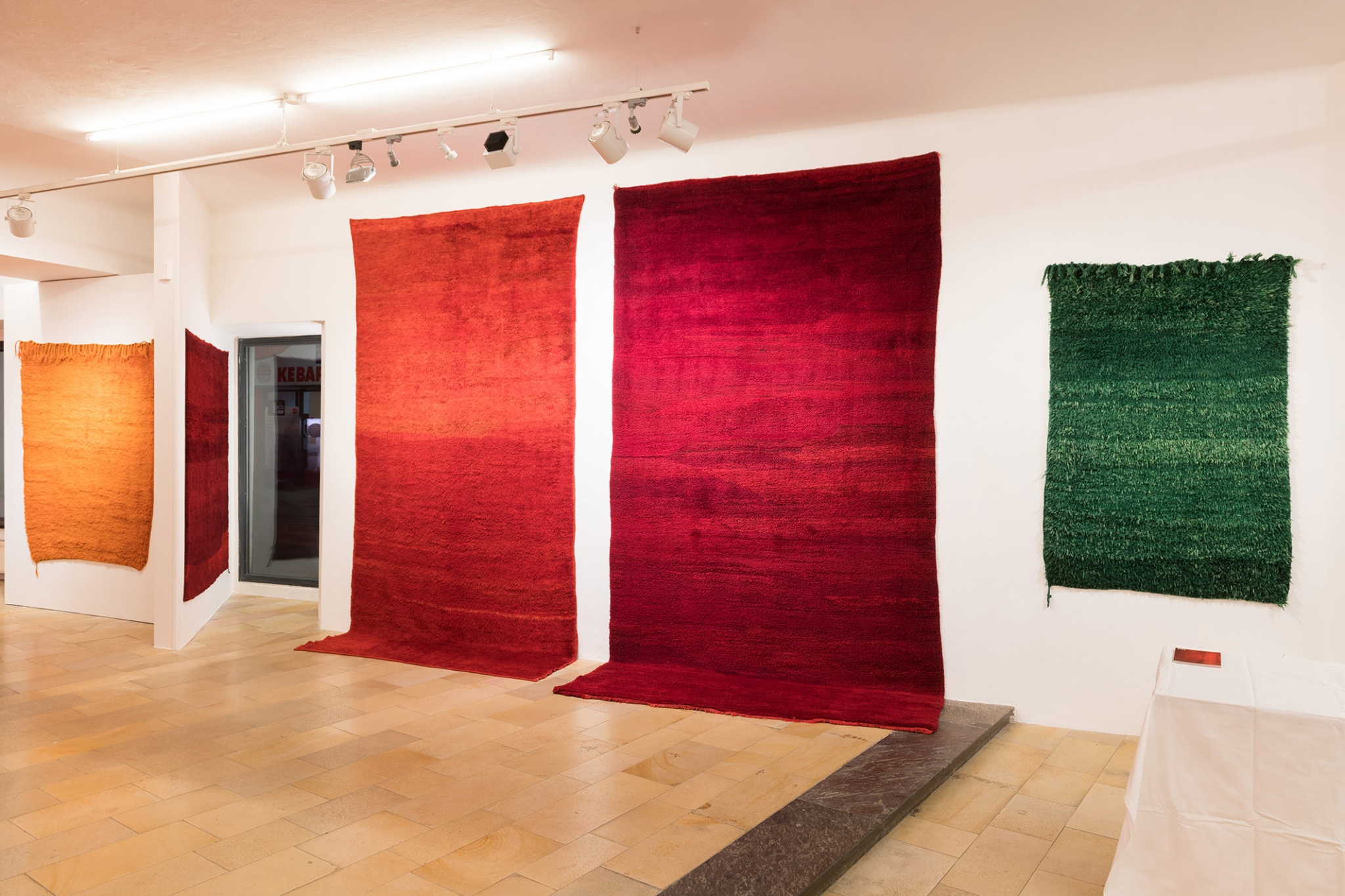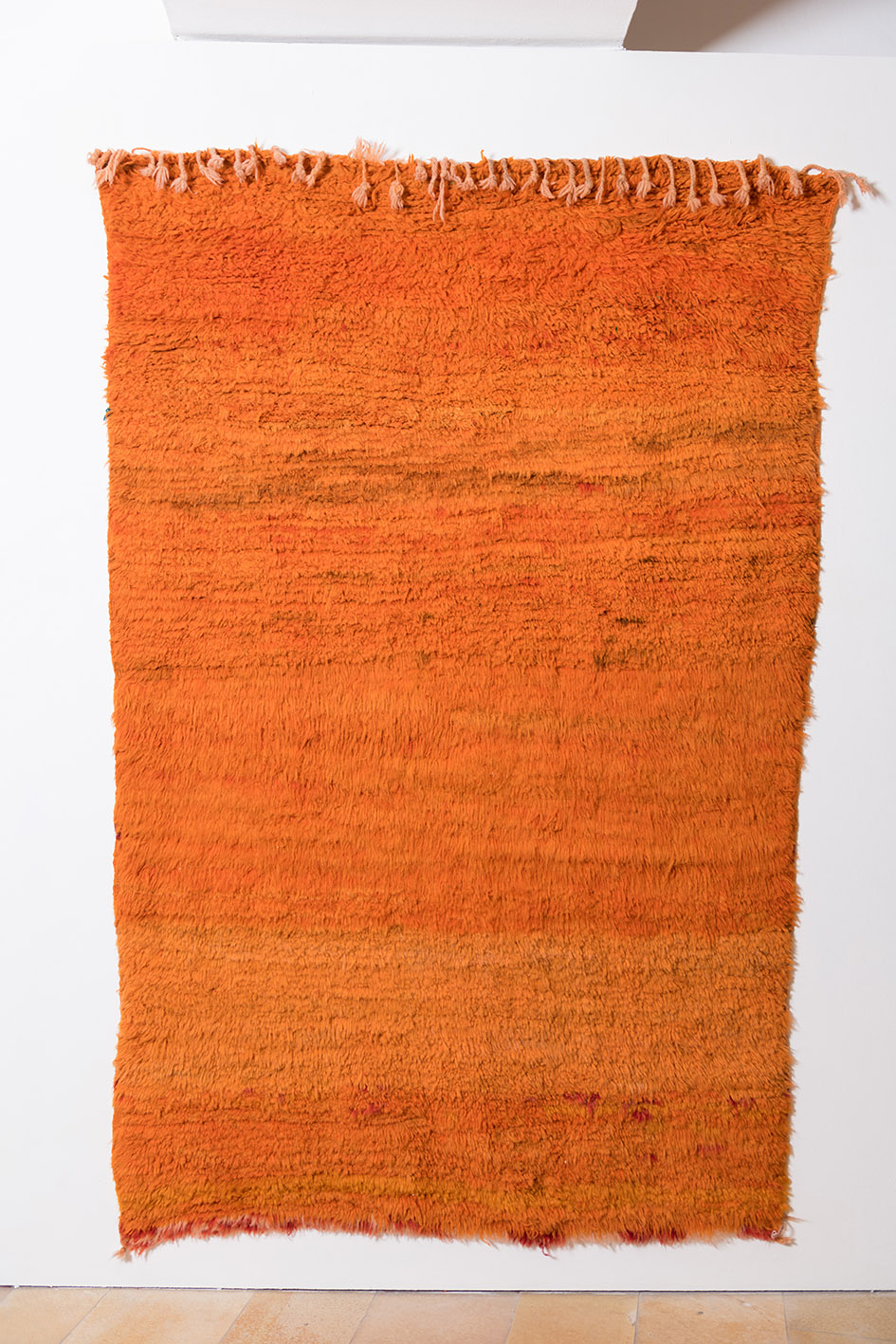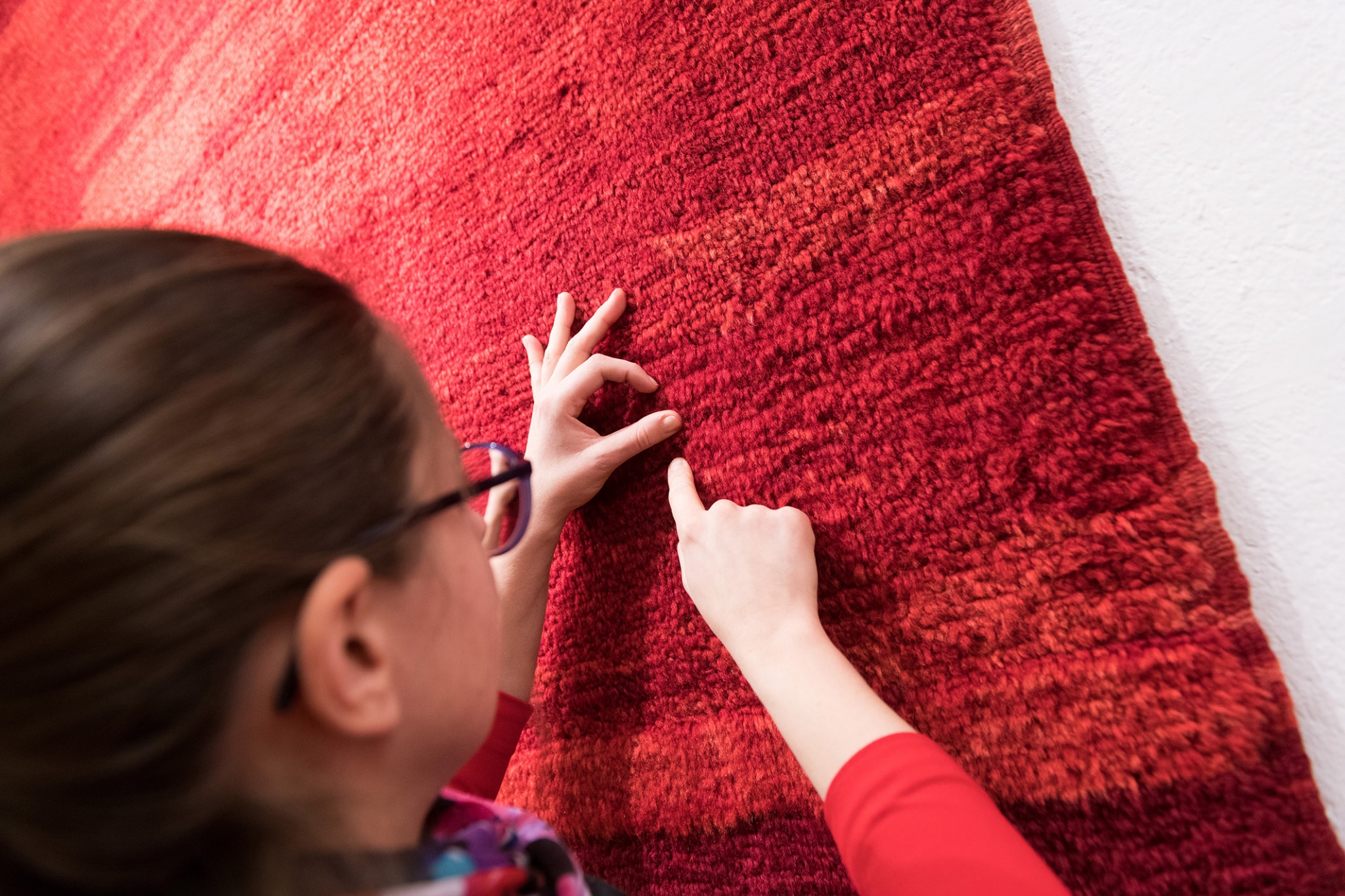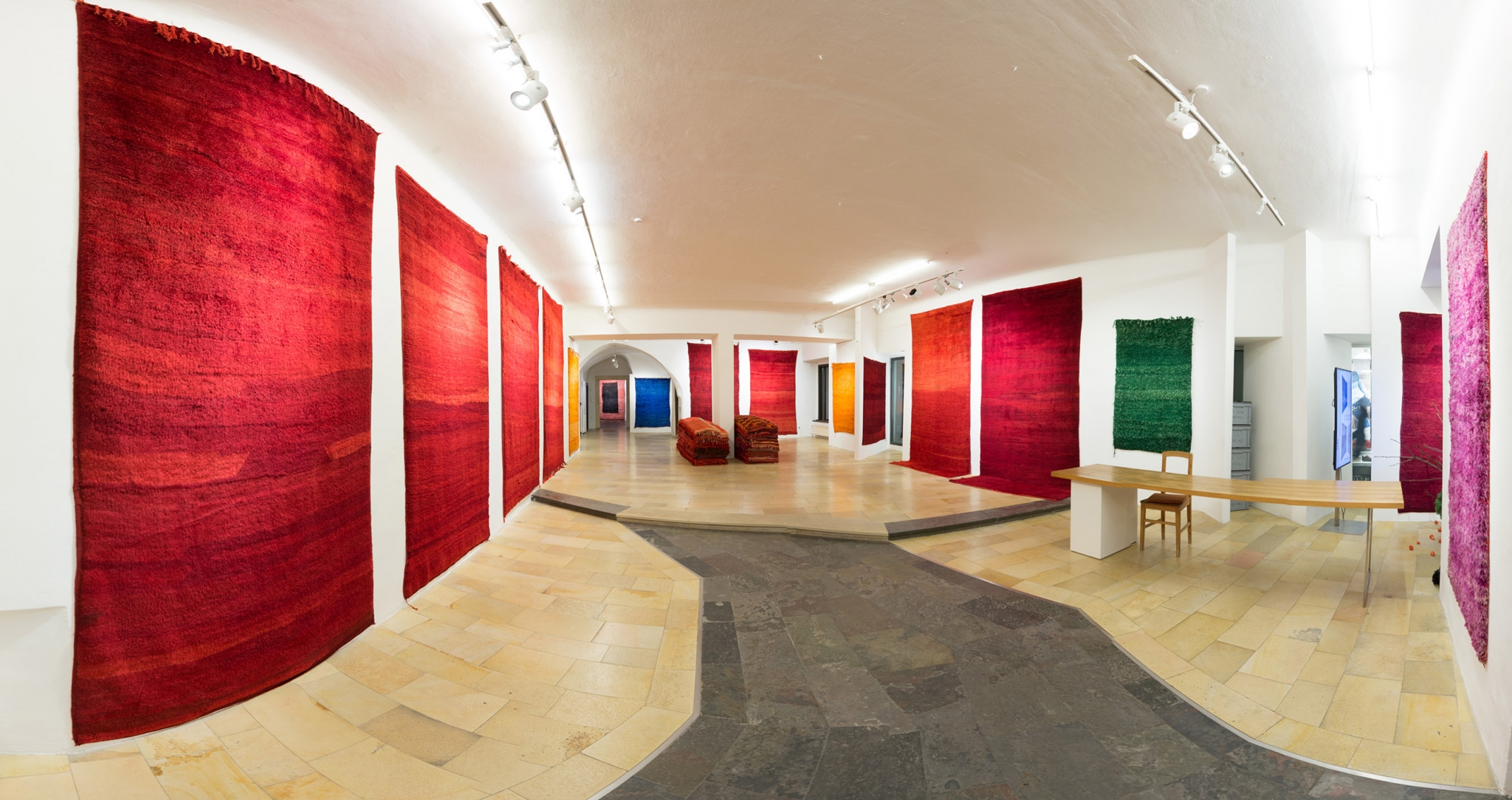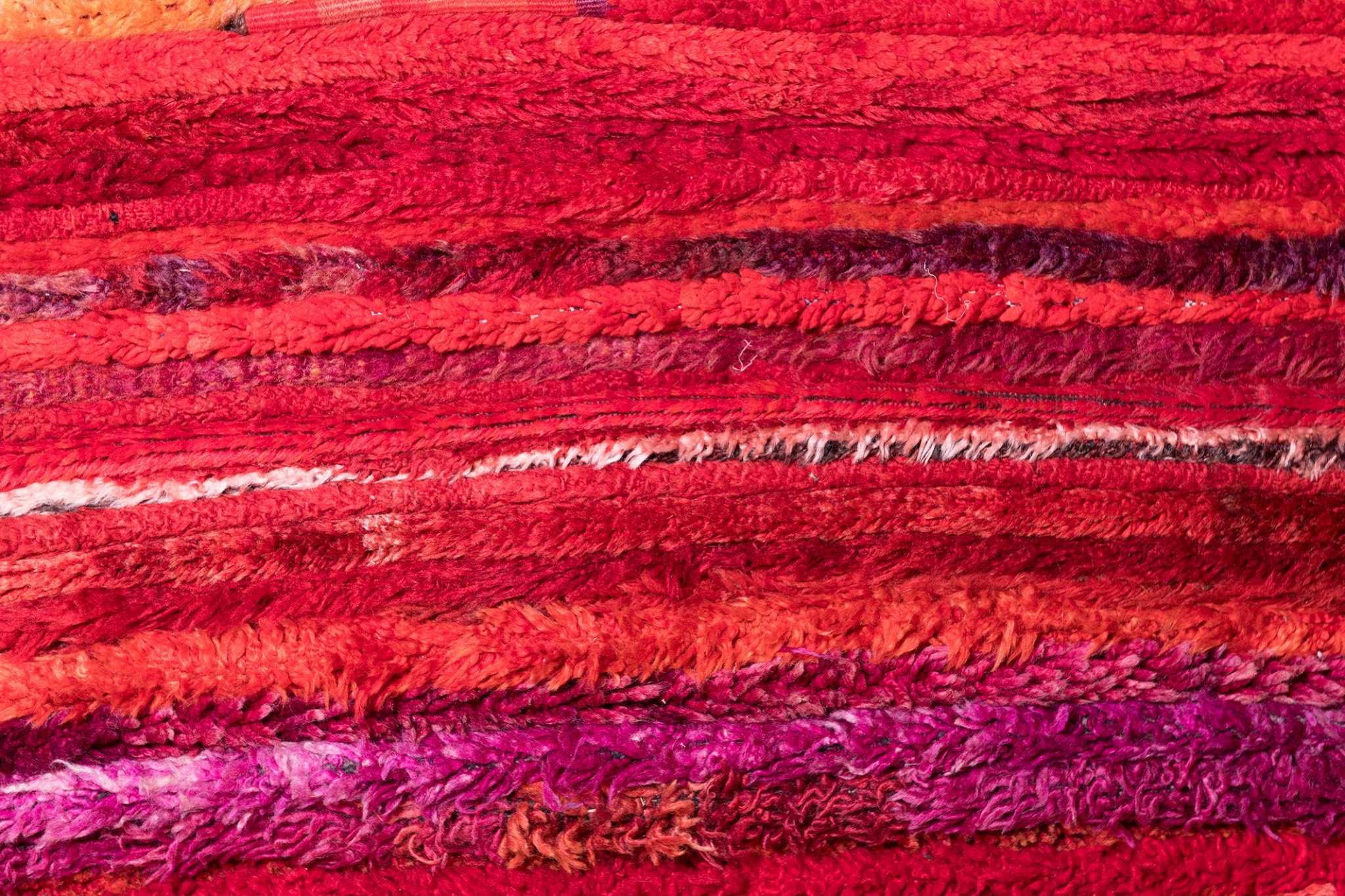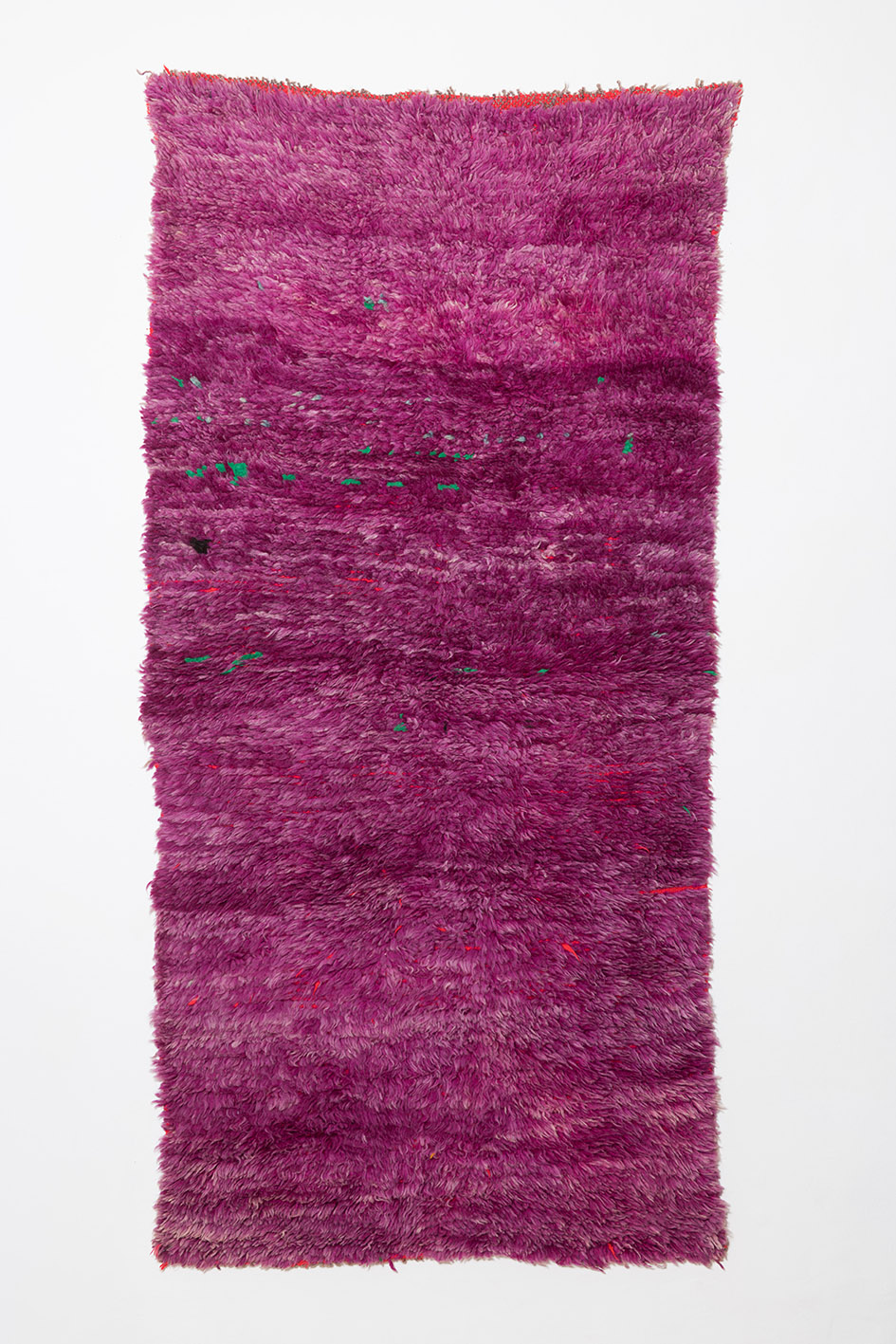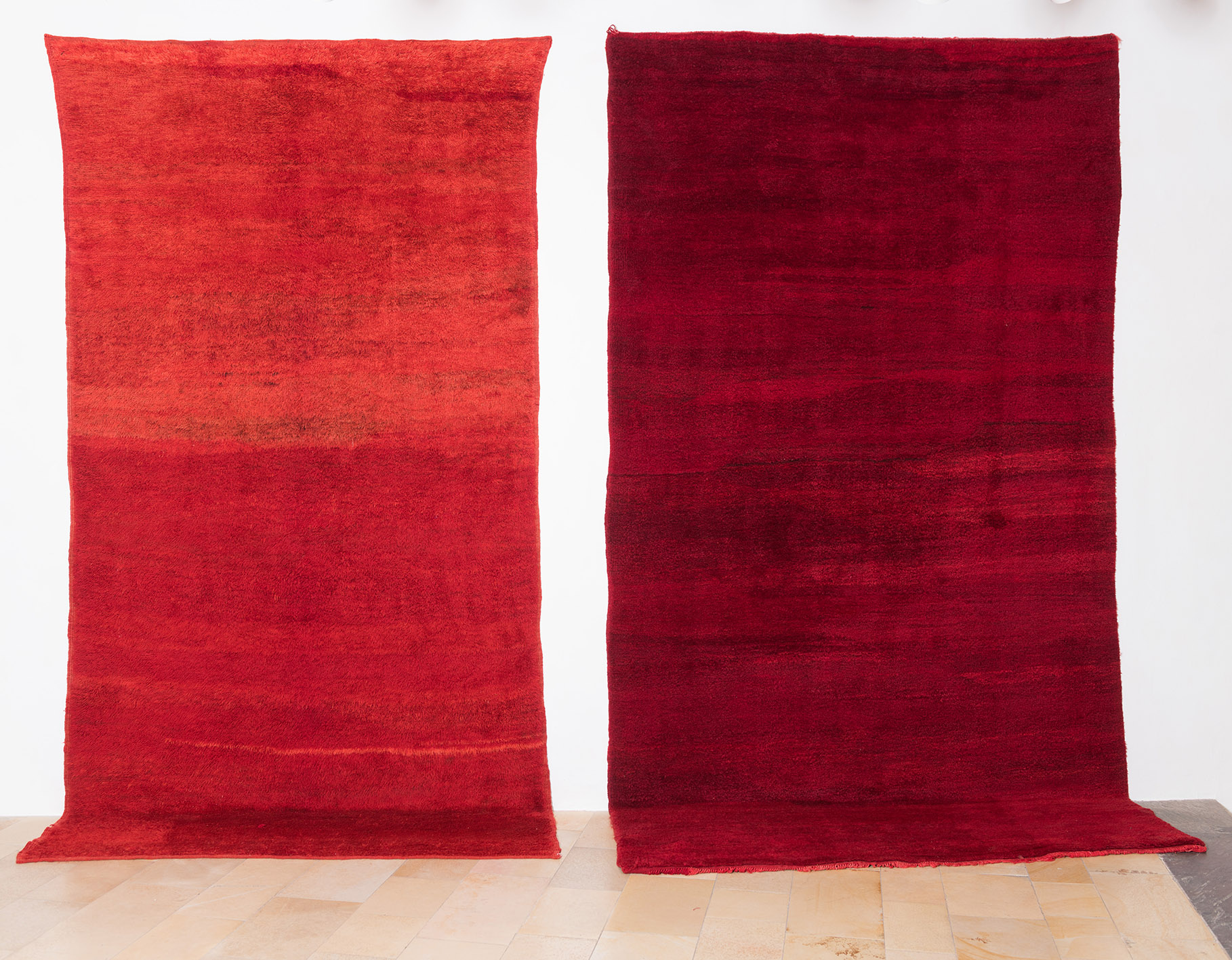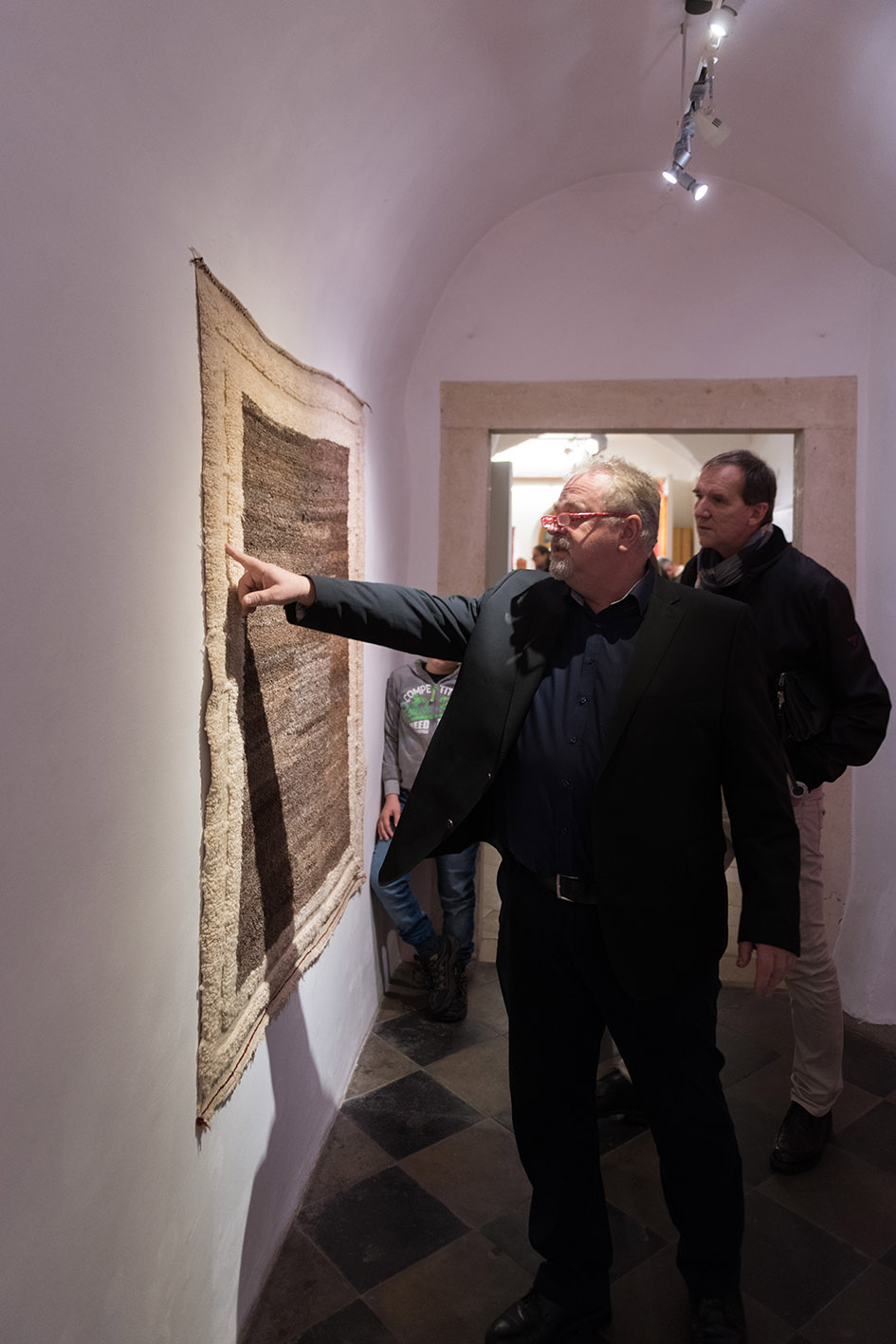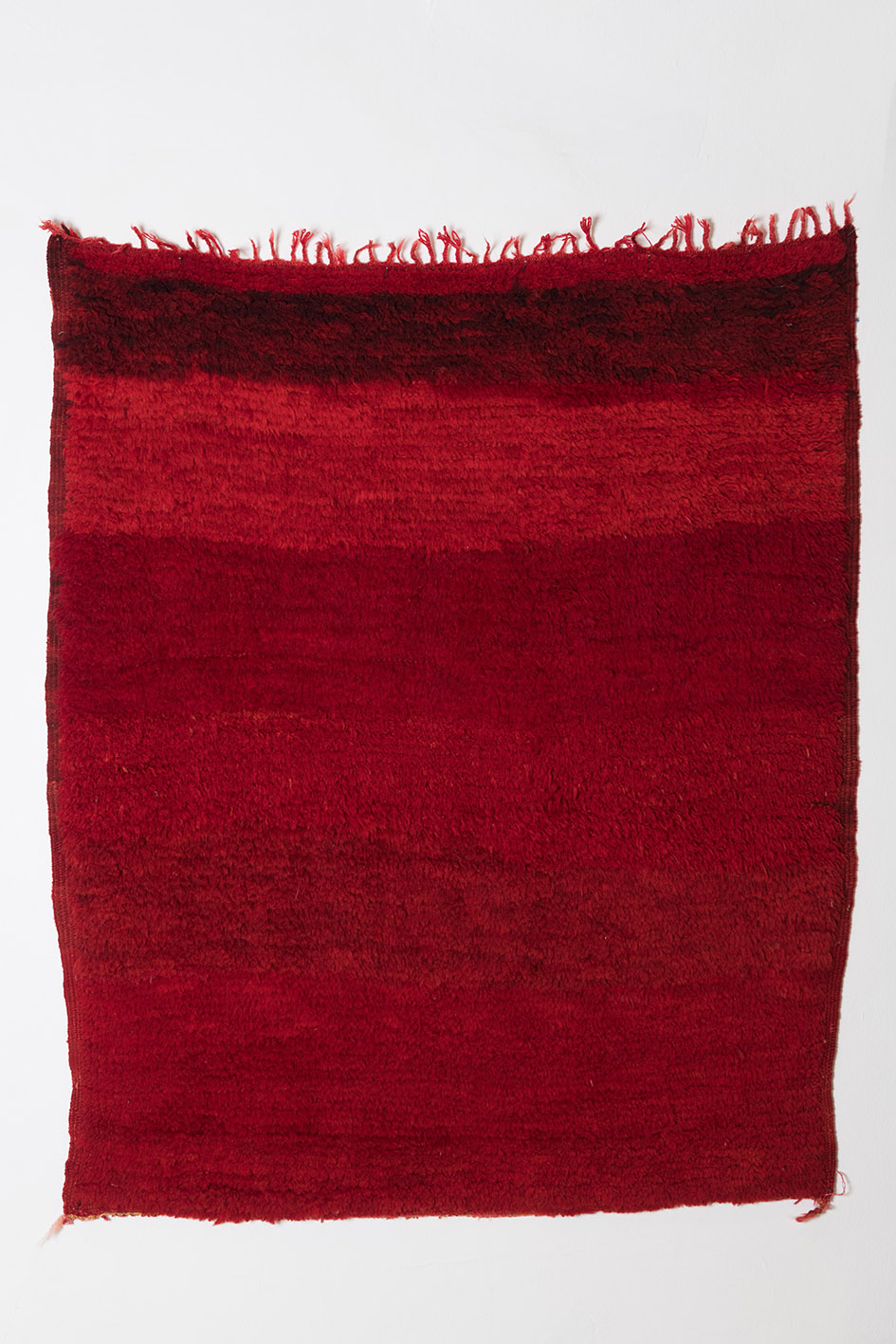Opening 4th of December 2017, 7 pm
Galerie Reinisch Hauptplatz 6, 8010 Graz
Introduction: Günther Holler-Schuster
In general, rugs and carpets are information carriers consisting of a network of ornaments formed mainly from stylised depictions of plants, animal and human beings. In cross-cultural terms, the system which emerged from China across Central Asia and Anatolia to Morocco became a mode of expression that condensed archaic knowledge and religious levels of meaning. The nomadic culture from which rugs and carpets basically arose does not distinguish between pre-Islamic and Islamic or symbols of other religious beliefs. Rather, the migration of patterns and changes in the meaning of individual patterns generated hybrid forms which led to a complex sign language. The latter continues to baffle us today and is consequently the subject of all kinds of attempts at interpretation. Although the different purposes to which carpets were put – as bags, padding, rugs, tablecloths or tent bands, etc. – are diverse, they have largely fallen out of use. Hence the carpet has become an aesthetic fetish object, something caught between an image and a functional object, especially in the West. Today, it is mostly detached from its original purpose.
Against this background it seems puzzling that there are not only ornamented carpets which can be readily interpreted more or less by their pattern structure. Completely monochrome rugs and carpets can be found in isolated cases in Tibet, among certain tulus in Anatolia and among the Berbers of Morocco. The extent to which this tradition goes back remains impossible to determine – for example, the kilims from the 18th century which can be found in central Anatolia manage to get by with one or two colours and address the issue of the empty area. The Moroccan examples mainly derive from the Middle Atlas Mountains. There is now widespread evidence of frequently high pile carpets from M’rirt, Beni M’Guild, Boujad or Oued Zem, mostly from the middle of the 20th century.
Viewed from a western-occidental understanding of culture, unicolour carpets also appear to us like pictures. Their seemingly abstract monochromy begins to dissolve during the viewing process, allows for a different readability or opens up additional possibilities for interpretation. Given that paintings or pictures were thought of as windows – into a mainly non-existent, imaginary world – from the Renaissance onwards (Alberti), it also becomes clear how we view a monochrome area on the wall as we approach it: We try to recognise something figurative. The women carpet weavers of the Berbers must have experienced something similar when they made their unicolour carpets, mainly in red, often in blue and occasionally in green or orange-yellow. The expanse of the landscape, the gentle ripples of the dunes, the colourful vegetation in contrast to the barrenness of the dry mountain and desert landscape, all this is reflected in their monochrome designs. The psychology of colour enables us to perceive red carpets as warming objects and blue carpets as cooling objects. They all follow the logic of the carpet as a visual and tactile object.
Impressive in this regard is the incredibly rich palette of colours which seems to make use of the entire spectrum of the rainbow. What confronts us here is nature in its most condensed form – moods, places and spaces. As with monochrome paintings, by Mark Rothko or Barnett Newman for example, the area of the rug or carpet also becomes the space or the imaginary cosmos of basic needs and spiritual reflection. The emotional and spiritual spaces which emerge here with abstract forms and monochrome areas coagulate into a symbol of waxing and waning – colour space as part of an infinity seemingly dominated by man.
Günther Holler-Schuster
